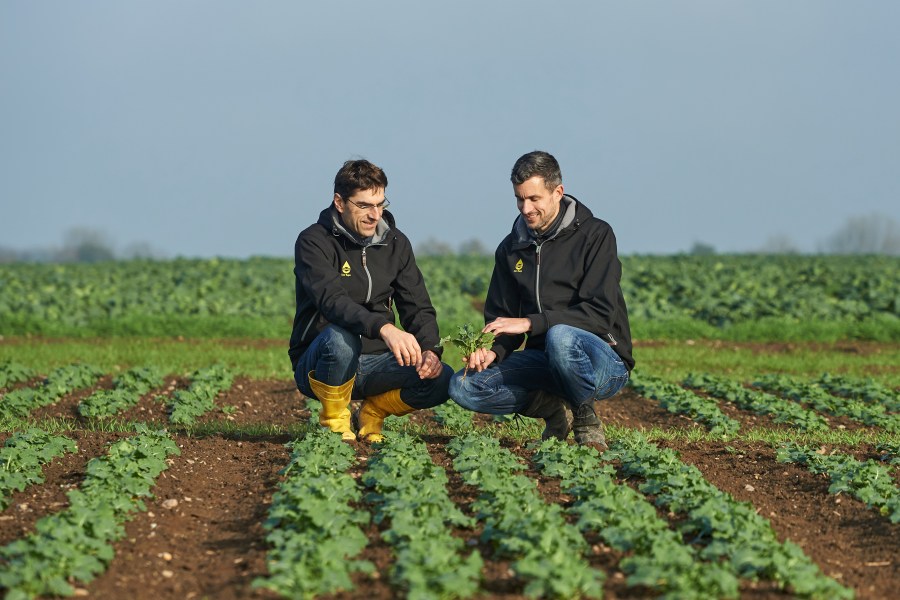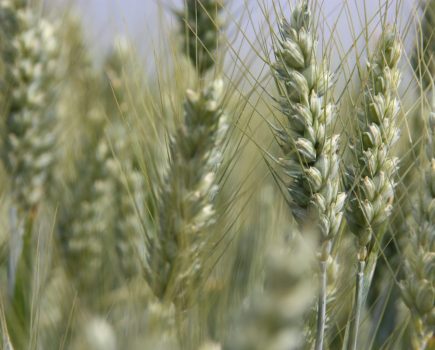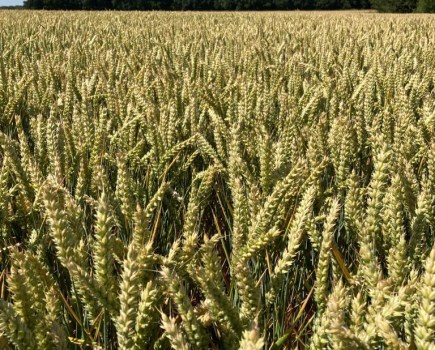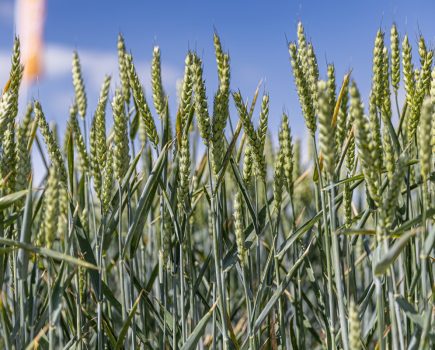Four years on from the official launch of RlmS, NPZ is bringing the next generation of stem canker resistance to the market. CPM finds out more.
“It’s not just about surviving today; it’s about staying resilient tomorrow.” – Kirsty Richards
By Charlotte Cunningham
In 2021, CPM reported on a pivotal moment in the battle against stem canker in oilseed rape with the introduction of the RlmS resistance gene by what was then known as LSPB, now NPZ. Fast forward to today and that story continues to evolve – this time with an even more promising development from the seed house in the form of Rlm12.
Since the RlmS trait entered the Recommended List, varieties carrying the gene have consistently outperformed older resistance types, with RlmS varieties like Maverick now achieving top scores of 9 for stem canker resistance.
By contrast, those relying solely on the widely-used Rlm7 gene are seeing scores decline to as low as 4 or 5. Experts believe this comes as no surprise, following reports of a breakdown in resistance during recent years.
Like RlmS, Rlm12 offers robust resistance against Leptosphaeria maculans, the pathogen behind phoma stem canker. The origins of Rlm12 go back several years to NPZ’s German breeding programme. Breeders had begun to notice a pattern of unexplained resistance in certain OSR lines – varieties that didn’t carry known genes such as Rlm7 or RlmS, but were still showing strong performance against stem canker. This mystery triggered a deep dive into the genetic architecture of those plants.
“We started using state-of-the-art genomic and bioinformatic analysis to identify the source. That led us to a new genomic locus, which we’ve named Rlm12,” explains Michael Shuldham.
Delving into this further, NPZ’s Dr Steffen Rietz, who’s led much of the genomic research behind Rlm12, explains that unlike previous major resistance traits such as Rlm7 or RlmS – which were introgressed from turnip rape and other exotic genetic resources through lengthy backcrossing and development cycles – Rlm12 was discovered from within NPZ’s elite breeding material. This alone represents a paradigm shift in how resistance genes are sourced and brought to market.
“In 2021 we had two years of good stem canker pressure in our field nurseries,” explains Steffen. “That gave us a chance to score our elite material for stem health and combine that phenotypic data with high-density genotyping using DNA chip technology. Using genome-wide association studies, we pinpointed a locus associated with strong stem health.”
Interestingly, the locus had been described before in academic literature – in a 2016 paper by Harsh Raman – and designated as QTL (quantitative trait locus) Rlm12. But it hadn’t seen significant use in commercial breeding programmes.
The rediscovery and validation of this QTL in elite breeding material allowed NPZ to accelerate the journey from identification to variety integration, achieving progress in just a few years – remarkably fast in crop breeding terms.
“This wasn’t a one-hit wonder,” adds Steffen. “It’s part of a broader strategy at NPZ where we continuously scan elite material and genetic resources for novel resistances.”
Crucially, like RlmS, Rlm12 is what NPZ terms an adult plant resistance. Earlier resistance genes such as Rlm3, Rlm5, and even the most widely deployed Rlm7 acted primarily in the cotyledon stage, targeting early leaf spot symptoms. While useful, these resistances were prone to breakdown over time, notes Michael.
“Rlm12 and RlmS work differently – they stop the disease from spreading through the petiole into the stem and that’s where the real damage is done. This is because stem canker leads to lodging, early senescence, reduced nutrient uptake, and ultimately poor yields.”
By targeting this critical phase of disease progression, Rlm12 offers growers a more durable and yield-protective solution, especially when combined with other traits.
Securing this resistance into varieties has been the task of NPZ’s Christian Flachenecker who says the benefit of this stem resistance from a grower perspective, is a likely inherent yield advantage. “Stem resistance correlates more directly with yield. If you’ve managed to get the crop through the challenges of autumn and winter – especially in the UK, with issues like cabbage stem flea beetle – it’s a tragedy to lose that crop at the final stage due to stem canker.”
Moreover, stem resistance may also be more durable. While the precise molecular mechanism of Rlm12 remains under investigation, early work suggests it might function differently from classical gene-for-gene resistance models like Rlm7. This could mean broader and more robust resistance, although as always in plant-pathogen interactions, no resistance is invincible, stresses Steffen. “Nature finds a way; we’ve already seen that with Rlm3 and Rlm7. Resistance erosion is inevitable over time, especially when a single gene is widely deployed.”
As such, Rlm12 is being launched to complement other resistances like RlmS, rather than be a direct replacement, continues Michael. “It’s a step forward again in reducing plant damage and slowing down pathogen adaptation, and by using it alongside RlmS and Rlm7, we’re also protecting the longevity of those other genes as part of an integrated strategy.”
Looking to the field and leading the commercial charge for Rlm12 is a new candidate variety from NPZ named Karat. It’s the first to stack Rlm12 and RlmS – a double-barrelled approach to stem canker resistance, and one that’s already showing promise in trials.
“It’s all about giving growers a really healthy plant – one that’s better able to withstand not just stem canker, but a whole range of pressures.”
And arguably, the numbers back it up. In 2024 trials, Karat emerged as the second highest yielding candidate in the UK at 109% of control. This is of course on top a stem canker score of 8 and it also boasts a light leaf spot score of 8 making it the joint-highest scoring candidate for this increasingly important disease. Crucially, Karat is also resistant to TuYV and holds the joint-highest oil content of any candidate variety.
The wider industry has faith in Karat’s integrity too, with Frontier recently adding it to its OSR de-risking partnership, explains Kirsty Richards, national seed technical manager at Frontier. “It’s been a difficult few years for OSR, but for many of the growers who stuck with it this season, crops are looking the best they’ve been for some time,” she says.
“We’re not expecting the OSR area to bounce back overnight, but with improved genetics and risk management schemes for crop establishment, there’s definitely renewed confidence.”
That renewed confidence is something Frontier is keen to build on with Karat playing a central role in that strategy. As one of the five varieties included in their new OSR de-risking partnership, growers not only benefit from strong genetics but also a financial safety net – with OSR seed costs and even companion crop seed reimbursed under the scheme for any crops not established.
“Growers are telling us that they still see OSR as the best break crop available,” comments Kirsty. “The challenge has been risk – and this partnership is all about reducing that risk while showcasing the very best in new varietal development.”
With Rlm7 showing signs of fatigue in the face of growing pathogen pressure, stacking resistance genes together is fast becoming the industry standard so having this within Karat is likely to make it very appealing to growers, believes Kirsty.
“The environment is more volatile and that’s accelerating the breakdown of single-gene resistances. Having Rlm12 stacked alongside RlmS offers much greater durability. It’s not just about surviving today – it’s about staying resilient tomorrow.
“We’ve seen it perform well in trials across two very different seasons. There’s a level of consistency there and for us, it was a no-brainer to include it in the de-risking scheme. It has all the attributes we’re looking for: high seed yield, good oil content, and real vigour from the outset.”
While the variety currently lacks pod shatter resistance, Kirsty is quick to put this in context. “I don’t see it as a deal-breaker. If growers are particularly focused on pod shatter, there are alternatives. But for those wanting high output and strong agronomics, Karat is hard to ignore.”
While Karat may be the headline act for this season, there are more innovative varieties coming forward from NPZ with clubroot resistance Crusoe and HEAR variety Eriksen. Both of these varieties are set to bring forward new traits within clubroot and HEAR, further genetic diversity, and even more resilience to future disease pressure – an essential strategy in the ongoing war against pathogen adaptation, he says.
As growers look ahead to autumn drilling decisions, the combination of Rlm12, RlmS, TuYV resistance, and high oil content makes Karat a compelling prospect, he concludes. “This isn’t just about plugging the gaps in the armour, “It’s about fundamentally improving the plant year-on-year while helping UK growers get the most out of every hectare.”
This article was taken from the latest issue of CPM. Read the article in full here.
For more articles like this, subscribe here.
Sign up for Crop Production Magazine’s FREE e-newsletter here.




